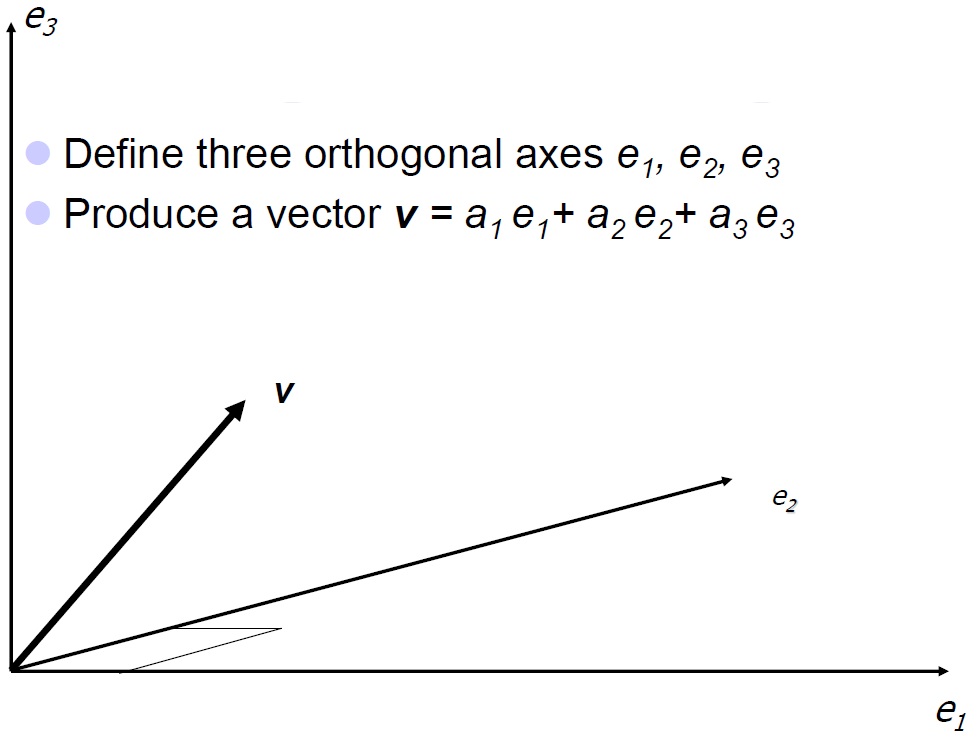Difference between revisions of "Geometric algebra"
m (→How we used it?) |
m (→How we used it?) |
||
| Line 40: | Line 40: | ||
[[Image:proof1a.png|center|450px]] | [[Image:proof1a.png|center|450px]] | ||
| − | [[Image:proof1b.png|center| | + | |
| + | [[Image:proof1b.png|center|300px]] | ||
| + | |||
| + | This gives us the final message vector of the form: | ||
[[Image:proof1c.png|center|450px]] | [[Image:proof1c.png|center|450px]] | ||
Revision as of 11:10, 28 October 2013
Rationale
As the main approach inherent in this project involved the use of rotations in Geometric Algebra, we were required to learn the basics of GA with the help of Dr James Chapel. The following description/brief introduction to the fundamental elements of GA is a combination of James' two documents below and numerous other sources. James graciously provided us with his personal powerpoint slides that proved to be an invaluable resource in learning the new materiala as well as a brief worksheet to test your knowledge on GA. Both are provided below.
Intro to Clifford's Geometric Algebra & Worksheet #1 in Geometric Algebra
"...it is a good thing to have two ways of looking at a subject, and to admit that there are two ways of looking at it.” James Clerk Maxwell
Geometric Algebra Intro
Geometric Algebra is the Clifford Algebra of a vector space over the field of real numbers endowed with a quadratic form. It's an elegant mathematical framework for expressing geometrical ideas and doing computations in fields such as physics, engineering and in computer vision (see Final Report GA for a list of some research applications). It correctly expresses the properties of physical space and one of the main benefits for our project was that it could be extended effortlessly to spaces of arbitrary dimensions.
Vectors are defined as shown on the left and are known as Cartesian coordinates, defined by Descartes in 1637. In 1879, Clifford's further described the space by adopting the folllowing-
The 3D space is then simply defined with each plane being defined by the multiple of two of e1, e2 and e3 and the trivector i represents the volume in its entirety. As a result of the anti communicating characteristics, we have Dual Representation of each bivector, by utilising the trivector to give.... e2e3 = ie1, e3e1 = ie2 and e1e2 = ie3.
How we used it?
As mentioned, the dominant method used for our project was rotations with GA, and fortunately enough, the formula for doing said rotations in GA is a very general one. It's shown below and is applicable to rotations of any dimension, whether it be 3D, 4D 5D or even 20D. It's important to note that DeMoivre's theorm applies.
So as mentioned several times throughout the wiki, the original plan for the project was to examine a particular dimension thoroughly, beginging with 3D and either prove or disprove the question of whether or not rotations can be used to achieve secure communication in that dimensions according to the KS cipher. Once this was done, we would move on to a higher dimension and keep doing so until we found a solution or until project closeout- whichever came first.
So for an initial message vector m in the form shown below, we apply a Rotation Operator or Rotor R to the message in the shown form, wit a corresponding Reversion Operator applied to opposite side of the message vector as shown.
This gives us the final message vector of the form:
Resources
Our Work
See also
- Timing-based key agreement
- Timing Based Encryption: Test Case 1
- Timing Based Encryption: Test Case 2
- Timing Based Encryption: Test Case 3
- Timing Based Encryption: Test Case 4
- Timing Based Encryption: Test Case 5
- Geometric Algebra
- CLUViz Geometric Algebra Animation Software
- Secure communications without key exchange (main page)
- Secure communications without key exchange? 2013 weekly progress
- Proposal Seminar 2013: Secure communications without key exchange?
- Final Seminar 2013: Secure communications without key exchange?
- Semester A Progress Report 2013 - Secure communications without key exchange?
- Semester B Final Report 2013 - Secure communications without key exchange? 2013
- YouTube Videos



